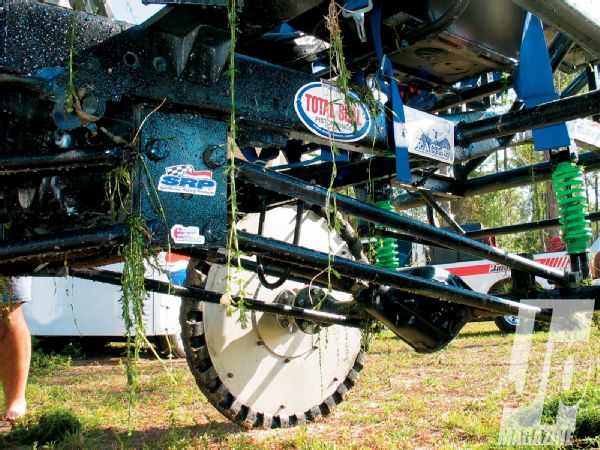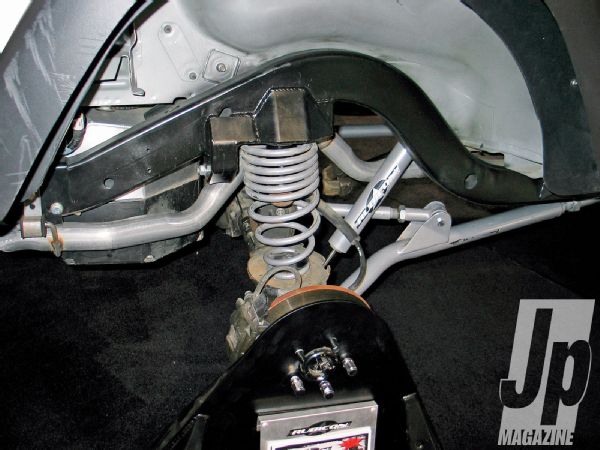
 Christian Hazel
Brand Manager, Four Wheeler
Christian Hazel
Brand Manager, Four Wheeler
Do brush your teeth at night. Don't pee on an electrical socket. Do tip your waiter.
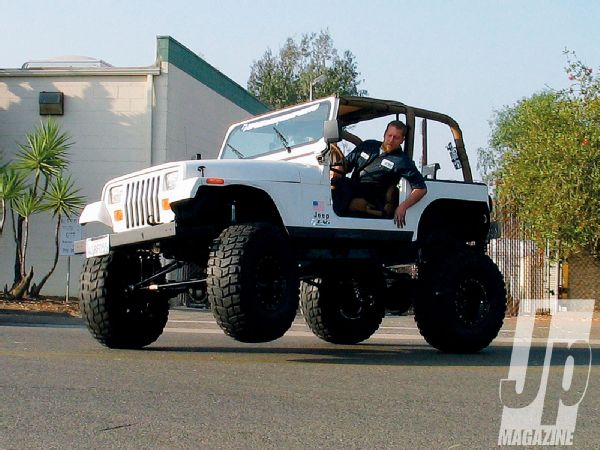
Don't pick up chicks with Adam's apples. Seems simple enough, right? But when it comes to modifying or building your coil suspension, the rules aren't as cut-and-dry. Unlike leaf springs, where you only have to worry about a couple of things like shackle inversion and lift height, coils offer a whole slew of intricacies. Technically, you can bypass a lot of the suggestions that we'll run down for you, but you could be left with compromised performance, annoying quirks, and a potentially unsafe situation. Furthermore, getting a coil suspension, whether standard coils or coil-on-shock systems (coilovers), set up to offer good off-road performance without negative on-road characteristics requires some forethought. Here are but a few things to consider as you modify your Jeep with the round-variety of springs.
Do: Put a little extra money into higher-end shocks if you're running a coil suspension.
Don't: Just run a basic cellular gas shock and wonder why your fillings get knocked out off-road at high speed.
Unlike leaf springs, which increase rate progressively as the spring compresses, coil springs offer a linear spring rate which stays the same until the spring fully compresses. The exception is multi-rate springs, which have different spring rates wound into the spring itself. Since most coil springs don't get harsher on compression, they can offer a smoother ride compared with leaf springs. But they can also require more advanced shock valving if hard, fast use or jumping is in the cards. A shock with progressive-rate valving that firms up at the top of the stroke can help soften the harsh impact as the axle mashes the bumpstops and will make for a more-controlled ride.
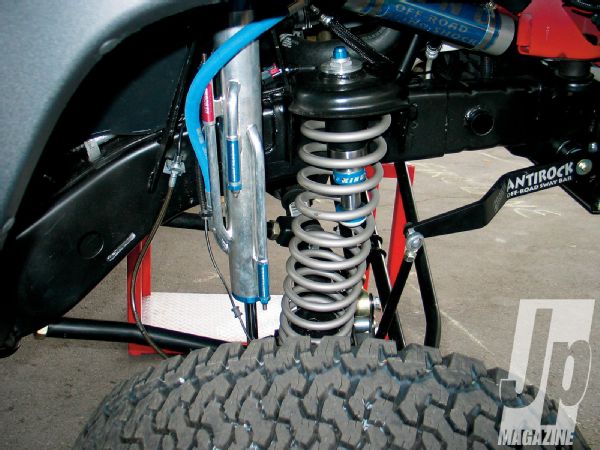
Do: Go ahead and run an inexpensive spacer lift as long as you address other components that may need modification.
Don't: Stack multiple spacer kits to gain more lift.
Running coil spacers to gain a little extra lift is a completely acceptable practice. Although many suspension manufacturers sell spacers by themselves, keep in mind that adding spring spacers taller than 1.5 inches in height will usually require modifications like longer shocks, dropped bumpstops, and possibly minor steering or brake line corrections. However, when used properly, coil spacers are a great way to gain a little height for a little money.
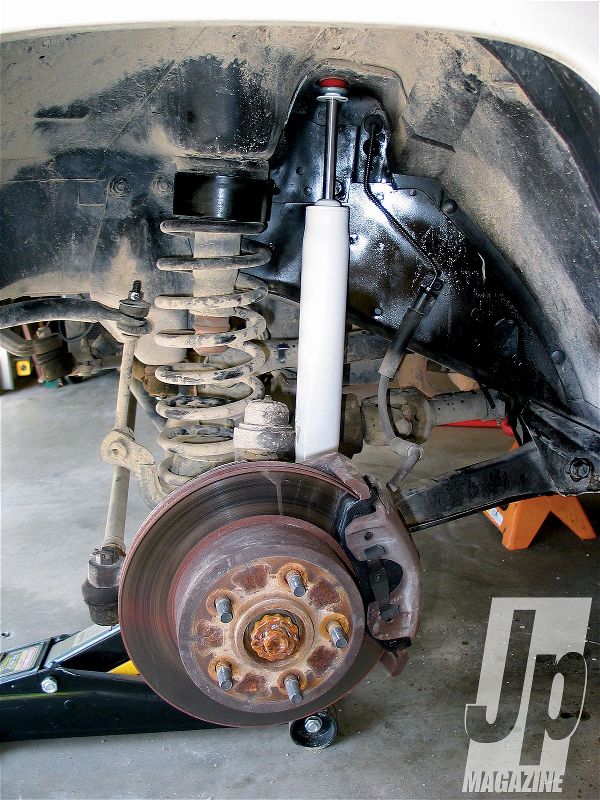
Do: Cycle your suspension and limit uptravel before coil bind occurs.
Don't: Turn up your radio and ignore the sounds of spring carnage.
Also unlike leaf springs, coil springs will compress under a vehicle's weight and then keep on trying to compress after they've reached their minimum height. This is known as coil bind and can occur unless the suspension is articulated and the bumpstops lowered accordingly. In addition to adding racket and possible damage to brake, Unitbody, frame, or steering components, coil bind is a quick way to destroy a nice pair of springs.
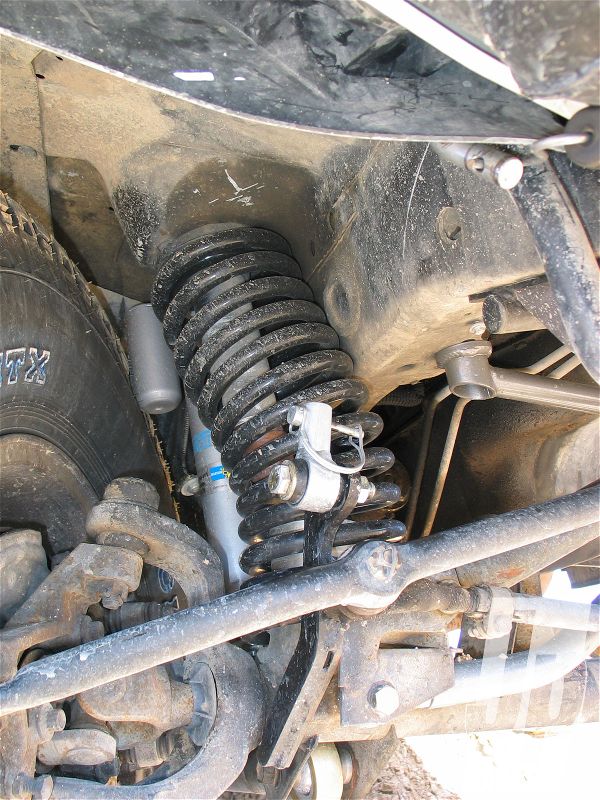
Do: Run swaybars on-and off-road with quad-coil suspensions.
Don't: Assume massive flex means massive performance.
When you run coil springs, sway bars are your friend. This is especially true when you're got both front and rear coil suspensions. We know a lot of enthusiasts like swaybar disconnect systems for jaw-dropping flex, but running no swaybars on a quad-coil suspension is a recipe for instability and a possible rollover. We always prefer running at least a front torsional swaybar like the Currie AntiRock. If fast street or off-road driving is in the cards, adding a rear torsional swaybar will add a great deal of stability, help keep all four tires planted during hard cornering, and won't impede flex to any great degree.
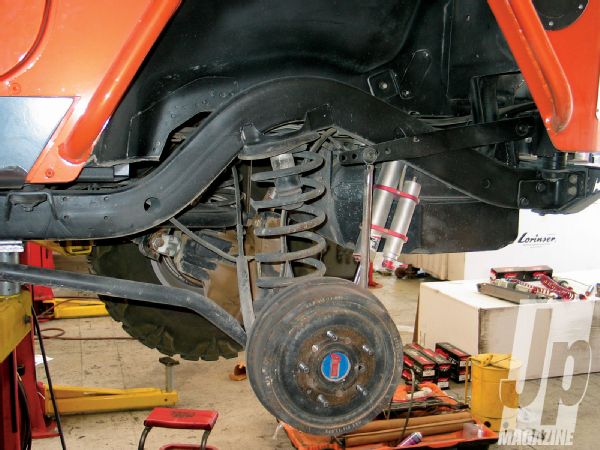
Do: Consider an adjustable upper coil mount to dial in your ride height and level your Jeep before you buy coils for your desired ride height.
Don't: Decide to add them later, get bummed at how tall your Jeep sits, and then have to buy new coils.
A nice upgrade to simple coil spring spacers, the Adjustable Coil Spacers (ACOS) system from JKS can be had with or without built-in hydraulic bumpstops and allows you to dial in your ride height and level your Jeep side-to-side by turning the spanners through their 2.25 inches (front application) or 1.37 inches (rear application) of travel adjustability. One caveat to the ACOS and most adjustable coil bucket mount systems is they add about 1.5 inches of height to the suspension. You also want to employ a lower spring retainer, whether factory or aftermarket, to keep the bottom of the spring from rotating out of its bucket mount and think about adding limiting straps to prevent the coil from unseating in the upper bucket.
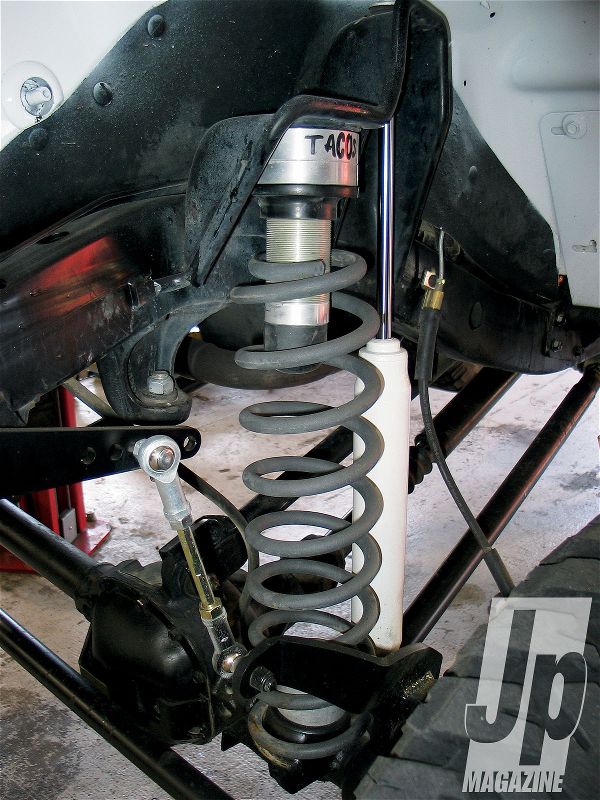
Do: Use any method available to safely limit your suspension uptravel.
Don't: Assume just because your suspension kit didn't come with them you don't require dropped bumpstops.
When limiting uptravel there are several methods available to the Jeep enthusiast. Most manufacturers offer longer bolt-on or insert polyurethane bumpstops. Or, there are a range of more race-oriented pneumatic or cellular foam bumpstops. Finally, many coil-sprung Jeep vehicles can employ bolt-in bumpstop spacers that install inside the coil bucket on the axle. Most suspension manufacturers offer these aluminum spacers in different solid heights, or JKS Manufacturing offers an adjustable kit comprised of several different thicknesses of stackable aluminum spacers.
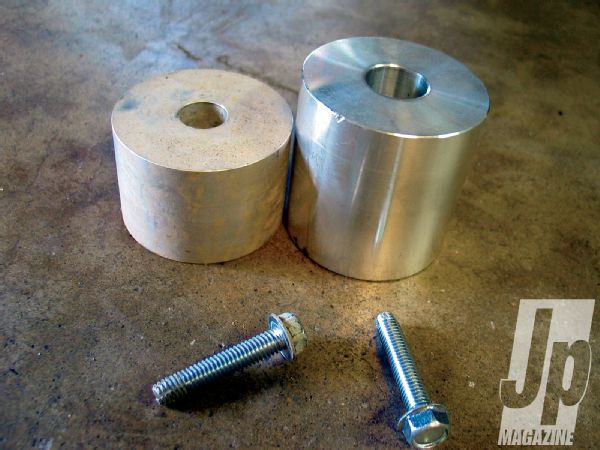
Do: Budget for a full-suspension upgrade including suspension links to get the most out of your suspension: not just taller springs.
Don't: Expect to easily dial in your ride and drive characteristics using your factory short control arms.
In addition to making sure your link mounts are beefy enough, like this Poly Performance weld-on three-link upper mount, you want to take into consideration the increased flex that you'll experience from longer, more supple coil springs. Consider replacing your factory control arms for more substantial aftermarket units featuring improved rubber ends, spherical bushing ends, or even solid spherical rod ends. In addition to the increased flex without binding, most aftermarket control arms factor in a good deal of adjustability which will allow you to dial in your pinion angle, four-wheel alignment, and make minor adjustments in wheelbase. Long-arm links when used in conjunction with properly-designed frame and axle mounting locations will improve the ride and performance over short-arm counterparts. If you stick with the factory control arms and your vehicle isn't already so equipped, install eccentric cam bolts to dial in your caster, camber, and pinion angle.
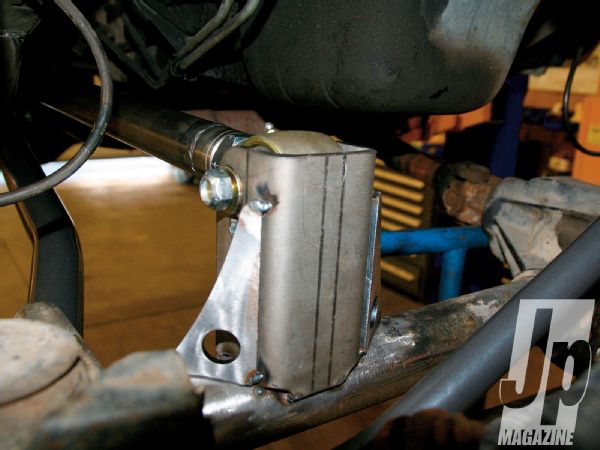
Do: Invest some time and research into suspension design, such as Herb Adam's Chassis Engineering book (available on amazon.com), before modifying your link suspension.
Don't: Build a suspension without the basic fundamentals of chassis handling.
We know it's really more in line with suspension geometry than basic coil spring principles, but if you're building your own rear suspension and don't want to run a track bar to keep the axle centered under the vehicle, a double-triangulated four-link is really the way to go. The opposing forces keep the axle centered and help prevent rear-steer phenomenon as the axle articulates. Most front suspensions will still need to run a track bar to keep the axle in line with the steering drag link. If you do run a track bar out back, make sure the rear track bar frame mount is on the opposite-side (usually the passenger-side) of the front track bar frame mount. Running front and rear track bars in the same direction will give you crazy stability when turning one way, but a real possibility of instability and rollover when turning the other.
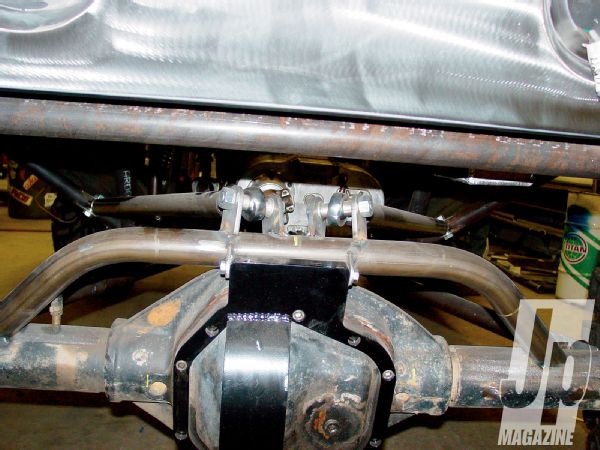
Do: Take measures to make sure your spring mounts are parallel at normal ride height.
Don't: Run your coils all bowed, goofy, and off-kilter.
This photo exemplifies two suggestions. First, if you want to maintain maximum uptravel but don't have the space to run a coil tall enough to avoid coil bind, certain manufacturers are having conical coils wound that compress into themselves. These coils offer a slightly progressive spring rate, but more importantly, allow much more uptravel without coil bind. Second, if you've moved your axle location by lengthening your wheelbase or are running tall coils, the axle bucket location may put the spring mounting surface out of square and let the coil bow at normal ride height. This can cause problems ranging from decreased stability, increased propensity to spit the coil out of its mount, and exacerbation of coil binding issues. Companies like Rubicon Express, GenRight Off Road, and Superlift offer weld-on coil relocation buckets that correct the issue. Also, AEV offers its bolt-on Nth Degree coil buckets, but the Nth Degree units will increase ride height by about 1.5 inches.

Do: Rely on a tried-and-true suspension manufacturer's kit if you don't understand how to properly engineer your suspension design.
Don't: Slap stuff on your frame willy-nilly and cry when you roll or can't climb an ant hill.
Finally, another brief word about geometry. If you're building your own suspension links and mounts, do some research into "vehicle roll center" and how it pertains to suspension squat and anti-squat characteristics. To over-simplify, you want your suspension link ends to eventually meet at a theoretical point in front of or behind the vehicle roll center to either increase or decrease antisquat. Increasing the separation between the link mounts at the frame end will increase antisquat and shortening the separation will lower the antisquat. Too much antisquat and the rear of the vehicle will only rise when the gas is pushed. Too little and your tires will lose traction. The key is to dial it in so the vehicle rises a bit and bites without losing grip.
